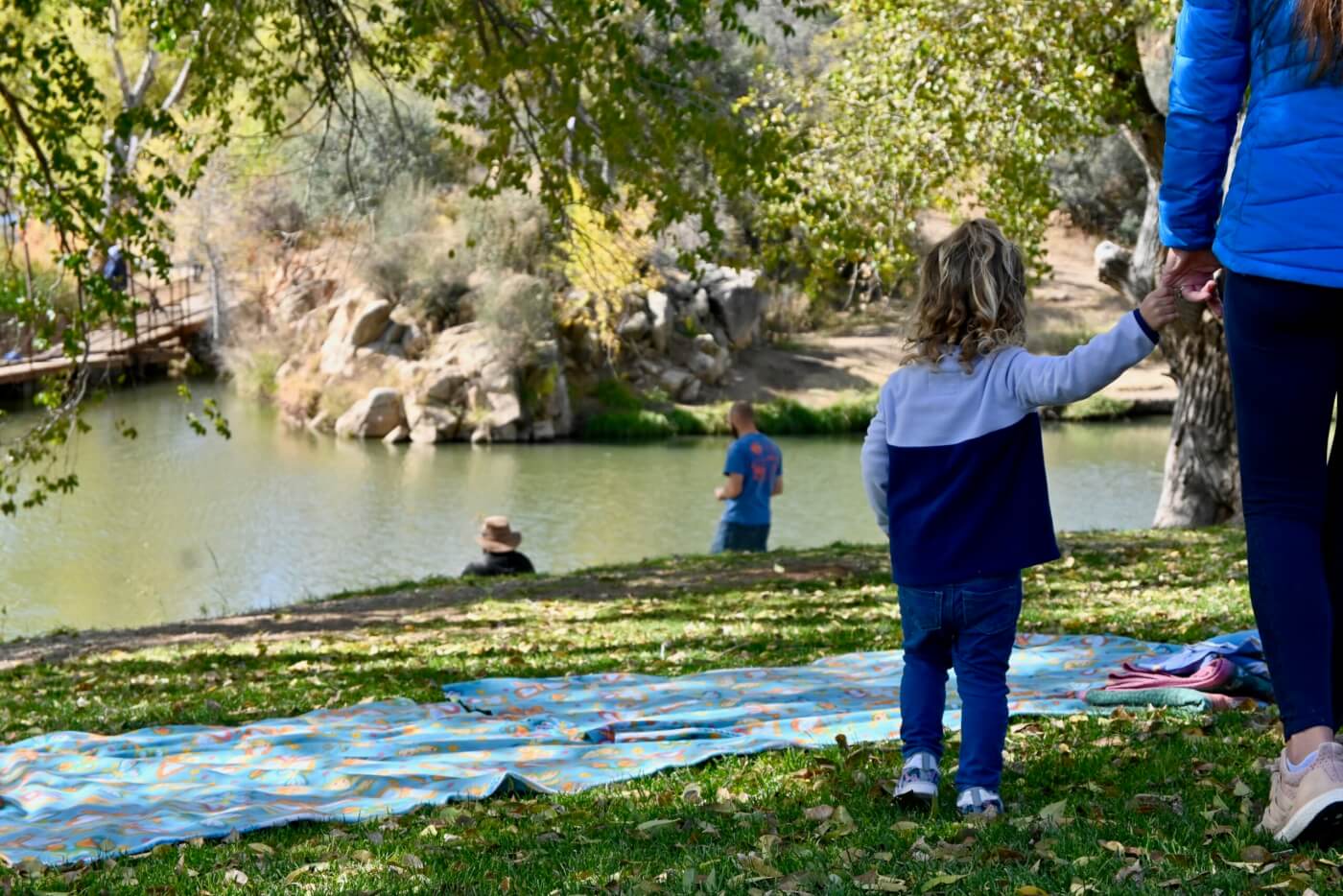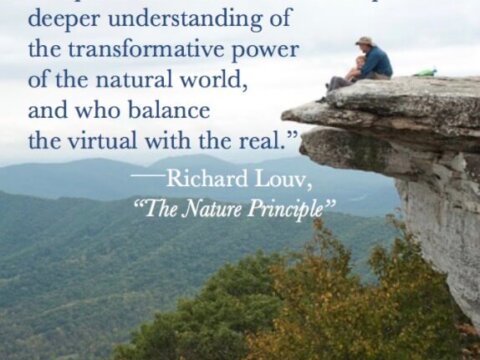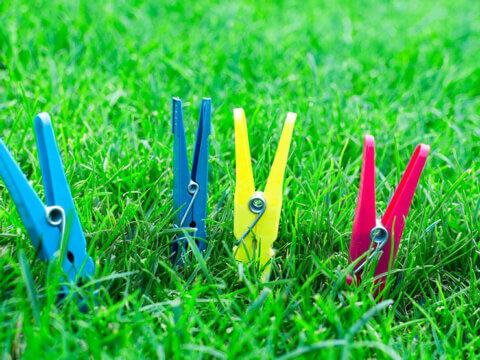In Prescott, Arizona, GIS maps give technical language to families in search of nature
Once a month, a group of Prescott, Arizona, residents receive an email with detailed instructions on where to meet, how to get there and what to bring. This isn’t a secret group on a clandestine mission. Instead, it is a group of families, local caregivers and their young children, eager to get outside and explore nature safely. The program, called Nature Niños, is a bilingual nature play initiative run through a collaboration between the City of Prescott and eight other local partners.
“The project has always been about authentically trying to understand the needs of the community,” said Ellen Bashor, Prescott’s Outdoor Learning Coordinator. When Prescott families with young children reported that they didn’t know where to go for safe, accessible nature, Nature Niños pivoted their programming to help introduce families to Prescott’s kid-friendly outdoor spaces.
“We wanted to, at the very least, give families a list of the most family-friendly nature areas they could go to,” said Bashor, “particularly for young children and families who don’t typically have access.”

Nature Niños gets families with children ages 0 to 8 outside in nature. Photo courtesy of City of Prescott.
However, Bashor soon realized that more needed to be done and began looking for additional ways to respond to what she was hearing from local families.
“We realized that the lack of information about park access was not just a social situation. It was infrastructural and systems-based,” Bashor said.
According to the 2022 U.S. census, almost 40% of Prescott’s population is sixty-five or older. “Prescott is growing into a predominantly retirement community and has a significant lack of resources committed to young children,” explained Bashor. “The program, Nature Niños, is incredible but it’s only a bandaid on a symptom.”
Bashor understood the challenge of getting city leaders and changemakers on board with an issue when there isn’t enough information to help them visualize what’s happening. That’s where geographic information system (GIS) mapping came in.
In 2022, Prescott joined the Children & Nature Network and the National League of Cities’ Cities Connecting Children to Nature (CCCN) initiative and Bashor saw how other cities had used GIS mapping to tell the story of the caregiver experience.
“It was mindblowing,” said Bashor. “You don’t know what you don’t know. Hearing the stories from other cities made [a project] that seemed intangible and huge into something that we could do. The CCCN cohort was powerful for us to realize that it was possible to do this and not feel alone doing it.”
Prescott was one of fifteen cities to join CCCN with a focus on enhancing “Early Childhood Nature Connections.” The group’s goal was to equitably expand nature access for young children, especially as it relates to low-income families and young children of color who have historically faced less access to nature.

Nature Niños leads child-centered play events at a different family-friendly trail each month. Photo courtesy of City of Prescott.
Vera Feeny, Senior Program Specialist for Children and Nature at the National League of Cities, ran the Early Childhood Nature Connections cohort. She reported that several cities within the group “vocalized the need to better identify where young children had less access to nature so they could make more informed decisions about where to invest resources.”
CCCN decided to support these cities through a catalytic grant that enabled them to conduct GIS mapping and data analysis. Insights from these efforts could then be used to better inform and refine local strategies.
Bashor and her staff worked with an AmeriCorps member, local university students and the city’s GIS department to gather and map the information needed. They leaned on partners such as First Things First, Arizona’s early childhood agency, for data on where young children live and the locations of early childhood centers. They also collected data on the city’s current green spaces, evaluating their quality by measuring variables such as walkability and the presence of play features.
“Until you can add in layers of quality and features, you don’t have the full picture,” said Bashor. “Without those layers showing data about early childhood and the quality and features of green spaces, we didn’t really have a clear definition of accessible nature.”
And after all, accessible nature is the goal of the program. “[GIS maps] gave us the language to technically discuss what we were hearing from caregivers all the time,” said Bashor. “When mom says she has nowhere to go, she literally doesn’t. Look at this map. Look at where the sidewalks are. Look at this playground. This is the only playground with a 0 to 2-year-old play feature in the entire city and you can’t walk to it.”

Nature Niños staff asks children and parents if they will return to Nature Niños events. Photo courtesy of City of Prescott.
The City of Prescott and Prescott Unified School District understood the importance of getting kids and their families outside – which is why Bashor’s position was created. It is a co-funded position between the city and the school district which began during the COVID-19 pandemic and evolved to fill gaps related to outdoor education, community health, early childhood education and parent education.
“Outdoor education is a vital part of our mission in Prescott Unified School District,” said Clark Tenney, Superintendent of Prescott Unified School District and Bashor’s supervisor. “Experiential outdoor learning helps students to learn more deeply, and to retain key information longer. The academic, emotional and physical benefits to our kids are clear.”
The interest in these types of programs from the school district and the city is evident through the funding of Bashor’s position. But, it’s also evident through community participation. At the first Nature Niños event, 30 caregivers and children attended. At the most recent event, there were 290 participants.

Ellen Bashor shares GIS maps with the local community to explain gaps in nature access for families. Photo courtesy of City of Prescott.
As initial maps and data came together, Bashor could pinpoint areas with greater need and less access to green space and nature programming. The maps identified where the city could add natural play elements to existing parks. They highlighted which schools had open green spaces and which didn’t. They even identified areas that could benefit from community events, winter gear and parenting groups.
“The next phase,” says Bashor, “is figuring out how this data is going to play out in our city’s big goals, plans and resource allocation, particularly when it comes to infrastructure and policies.”
And, it’s an excellent time to have these maps available in Prescott. The city is currently developing its next 15-year general plan and the Recreation Department is in the process of drafting its first-ever strategic plan. Bashor hopes the maps will be used to inform commitments in both plans, as well as funding priorities in local Community Development Block Grants.

A child smiles while participating in a Nature Niños event. Photo courtesy of City of Prescott.
Ultimately, Bashor envisions these maps serving as a call to action, urging the community to direct resources where they are most needed, and ensuring that every child has the opportunity to experience nature’s wonders.
“Whether I’m talking to elders or children, everyone will smile when they tell you about the tree they climbed,” Bashor said. “I haven’t met an adult who is against helping children enjoy nature like they once did.”
Equity Mapping Toolkit: Young Children & Nature
Encouraging new parents to get outside with their babies to access nature’s benefits, a Finding Nature News story
Using a data-driven approach to invest in Atlanta’s children, a Finding Nature News story
-
Voices
CAMPING WHILE PARENTING: A Mother-Son Adventure
-
Feature
A common thread: Indigenous-led foundation weaves together activism and art, climate and community
-
Network News
Community Spotlight: Prescribe Outside
-
Voices
That’s nice, mija: Finding common language in nature connections
-
Richard Louv
"HUMMINGBIRD PARENTS": Seven Actions Parents Can Take To Reduce Risk And Still Get Their Kids Outside











